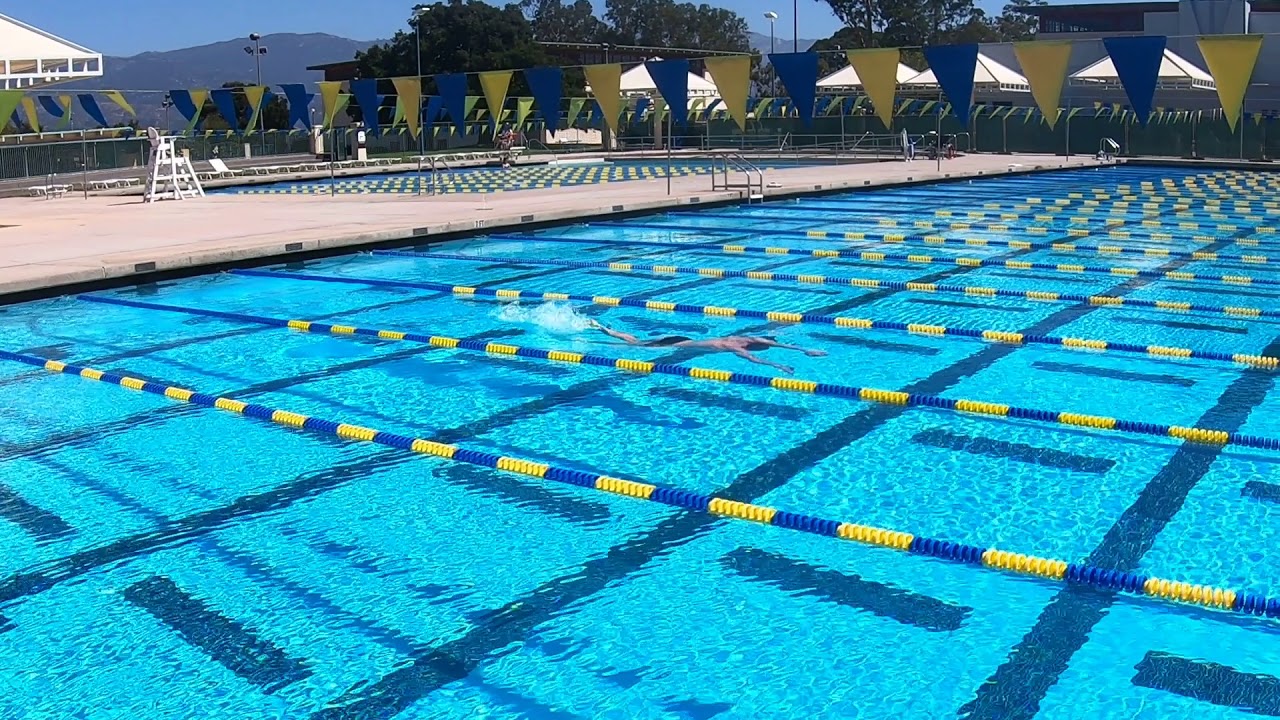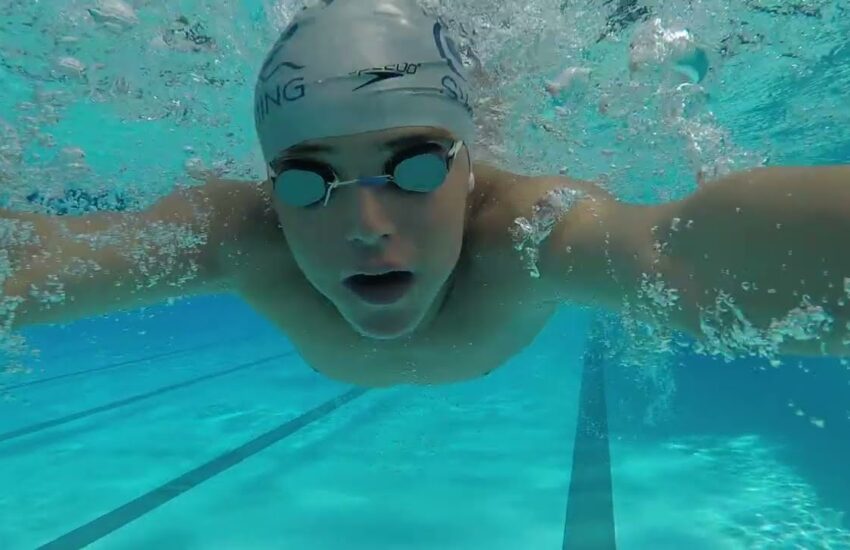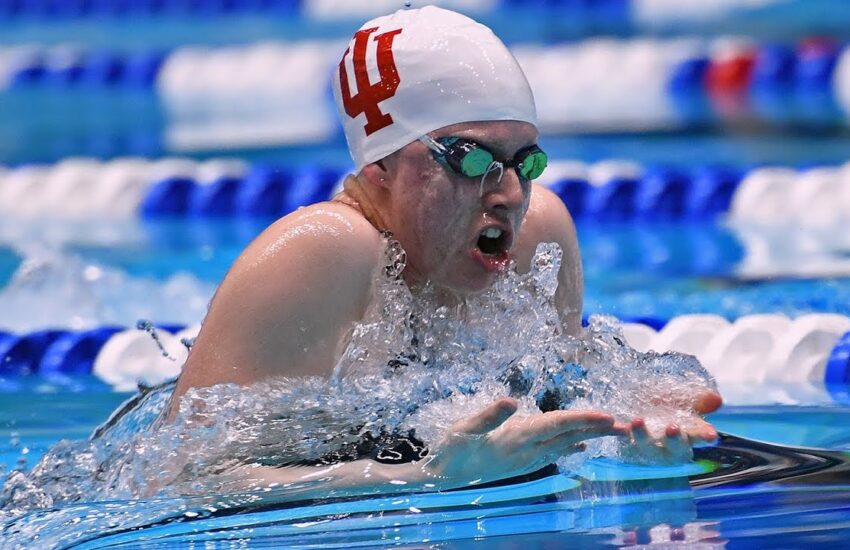How to swim freestyle?
Learning how to swim freestyle is a skill that requires practice and patience. This swimming stroke begins by spearing water with one hand. The hand should be placed above the elbow and shoulder blades should be slightly backwards. The arm is extended forward as the body rolls to one side and the elbow remains above the hand. This technique will help you reach your goal of swimming freestyle. Here are some tips to get you started. Listed below are some of the most important points to learn.
Body rotation
Using body rotation when swimming freestyle will improve your speed, efficiency, and reach. This technique puts you in the best position to use your back muscles, which will improve the efficiency of each stroke and maximize power output. Here are some important benefits of body rotation:
Firstly, remember to take your breath on each side. If you breathe on one side only, try to focus your rotation on the other side instead. To visualize this, imagine that your hip is rotating out of the way before you take your breath. You will be surprised how much more effective this technique can be. Once you master it, you’ll be swimming like a pro. You’ll soon see how effortless and powerful this technique is.
You should aim for a 45 to 60-degree rotation during freestyle. Although you can’t use a protractor to measure your rotation, you can ask a friend to video your swim. Watch the video and get some feedback from an experienced coach. Alternatively, you could invest in a Finis Tech Toc to get live feedback on your rotation while swimming. This will allow you to correct any flaws in your technique and improve your overall performance.
Body roll
Developing your body roll while swimming freestyle is an essential skill for improving your technique and performance. It is a fundamental swimming technique that allows you to utilize your large muscles, minimizing the need to use your sides and front delts. Body roll helps you recover your arms with ease. Proper body roll also minimizes head turning, making breathing easier. Learn to do it correctly, and you’ll be swimming with less head turn and more power.
The mediolateral distance between the ankles is smallest during front crawl and largest during backstroke. The difference is probably due to differences in torque production patterns. While backstroke swimmers maintain the same distance between their ankles, front crawl swimmers decrease the amount of body roll they do. Therefore, there is no direct relationship between the length of the roll and the duration of the entry phase. Moreover, backstroke swimmers maintain the same amplitude of the shoulder roll while swimming at different velocities.
Proper body roll helps improve the flow of the freestyle stroke. Proper body rotation helps build a regular rhythm and makes the entire process more efficient. The body roll must be controlled without affecting the rest of the stroke. Performing a body roll properly prevents unnecessary shoulder load and could cause injury. So, how do you perform the body roll properly? To improve your swimming technique, follow these tips and you’ll soon be swimming like a pro.
Downsweep
During the downsweep during the swimming freestyle, you will press down and outward. This action will catch the water as you swim. Your elbow should not bend during the pull. You should be facing down and your hand should be at least 45 degrees higher than your elbow. Your forearm should also remain straight. When you are ready to catch, rotate your hand and extend your fingers as you pull down.
After the entry of your hand into the water, you should perform the downsweep phase. You should make a gentle sweep of your forearm with your hand. Keep your elbow up and slightly flexed while making the downsweep. Once you have performed this phase, you should do the upsweep. This will help you catch the ball. If you have a flexed elbow, your hand will be more stable when you catch it.
In the downsweep, the arm will act as a lever that forces the body to rotate towards the arm in motion. As you begin the downsweep, make sure to keep your elbow at a 45-degree angle and keep the arm high in the water. Try to execute this motion quickly, but don’t go too fast. It won’t propel you forward, but it will add drag. During the downsweep phase, keep your arms close to the top of the water and avoid stroking the sides.
Bilateral breathing
When you’re learning to swim, you may be tempted to focus on just one side of your mouth while you breathe. However, this can hinder your progress as you focus on the rest of your strokes. One simple way to improve your breathing technique is to practice on your least-favorite side during your warm-up and drills. While practicing, try incorporating different breathing patterns, such as alternate length breathing and every three strokes. Visualizing a stream of bubbles emerging from your mouth may help you avoid cheating.
When swimming the freestyle stroke, bilateral breathing is a fundamental skill. In order to breathe properly, you must exhale and inhale fully as your face is submerged in the water. When you hold your breath, you risk becoming tense and accumulating carbon dioxide in your lungs. As a result, a popular swimming saying is to “blow bubbles.”
Another way to practice bilateral breathing is to do lung-buster pull sets. These sets can help you lock in a more balanced stroke and teach you how to deal with oxygen deprivation. Practicing bilateral breathing every second or third stroke is also beneficial, since it makes it easier to control your breathing. Once you’ve practiced bilateral breathing for a while, you can switch to breathing every third or fourth stroke. Ideally, you’ll be able to combine the two patterns for maximum effect.
Head position in the water
There are several ways to improve your head position in the water when swimming freestyle. First, keep your neck tall. This will help flatten your upper back and keep your head connected to your core. Secondly, try to face the air with your head and breathe from the top. Ideally, your head will face forward as you drive your body forward, while your face will rotate up and away from the water as you breathe.
Practicing your head position in the water before racing can help you improve your swim technique. You can practice chin position on land by standing against a wall. This will help you maintain the right posture in the water. Make sure that your chin stays in the water as your body rotates. This is important for the safety of your head and neck, as it can cause chafing around your neck.
Once you’ve mastered the basics, you’re ready to start practicing your head position. Your goal should be to maintain a long, lean profile in the water. Your head position should match your armpit, but it isn’t the only thing you should focus on. You can use your armpit to guide your head position while swimming freestyle. This will help you keep your neck and spine aligned and reduce drag.
Synchronization of arms
One way to improve arm synchronization is to perform catch-up basic. By performing catch-up basic, you will enhance hand position and feel the water on your forearm. As you start your stroke, rotate your right arm on a count of four and extend your bottom arm. Your top arm rests on your hip during the pause. When it’s time to breathe, you’ll extend your bottom arm first. Then rotate your head to the side to simulate full extension and a body roll.
The most effective way to perform catch-up is to think of the total stroke in segments. Each section of the stroke requires different amounts of pressure on the water. To maximize the strength and force in your pull, insert the blade directly in front of your shoulder. Then extend it forward to the catch position. Avoid placing too much downward pressure on the water as it will raise your body and create drag. This will slow down your forward momentum.
During the downsweep, the arm acts like a lever. As the arm moves forward, the body rotates toward the arm. The elbow should stay up out of the water throughout the downsweep phase. As you move up and down the body, it is important to keep the arms close to your shoulders. During the transition between strokes, don’t touch your hands.
Downsweep during downsweep
A common mistake that swimmers make is that they keep their arm extended during the downsweep. This causes two major problems: the extended arm must travel deeper and it increases the tendency to scull inward. A common solution to this problem is to extend the elbow. During the downsweep, the elbow should stay high in the water and flexed. This will keep the upper arm up and away from the sides, thereby maximizing speed and decreasing drag.
The downsweep starts at entry and continues until the insweep ends. This is where the arm flexes 90 degrees. Then the upsweep begins. The hand leaves the water and the swimmer completes the recovery over the water. This is the first phase of the armstroke. When the arms are flexed, the swimmer prepares for the upsweep.
The hand leads the pull and continues to sweep inwards toward the midline of the body. The elbow must gradually flex, and the hand should maintain pressure on the water until it reaches the thigh. At the same time, the hips should rotate as the hand passes by the thigh. Once the hand has reached the thigh, it should be able to reach the next phase, the backsweep.


